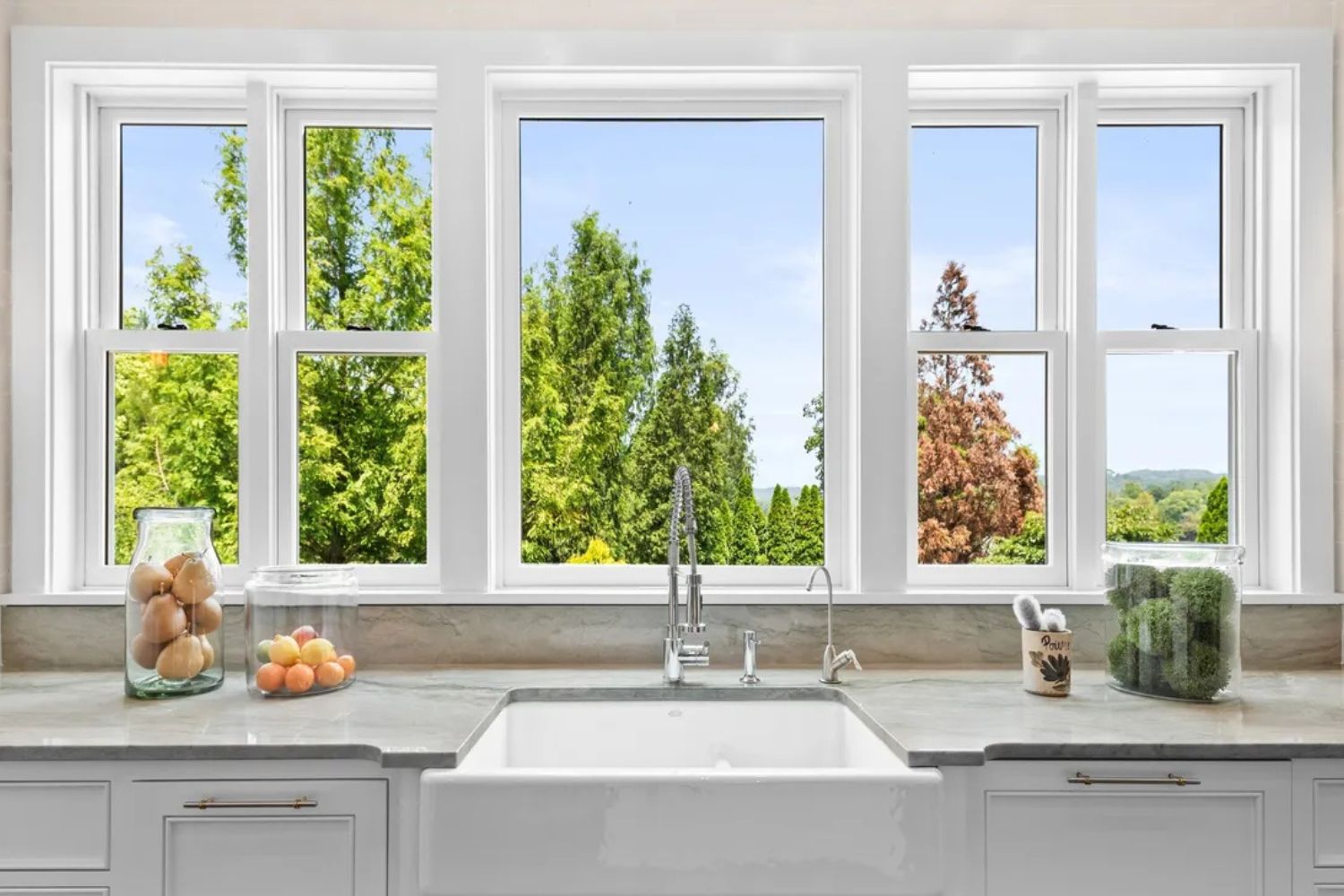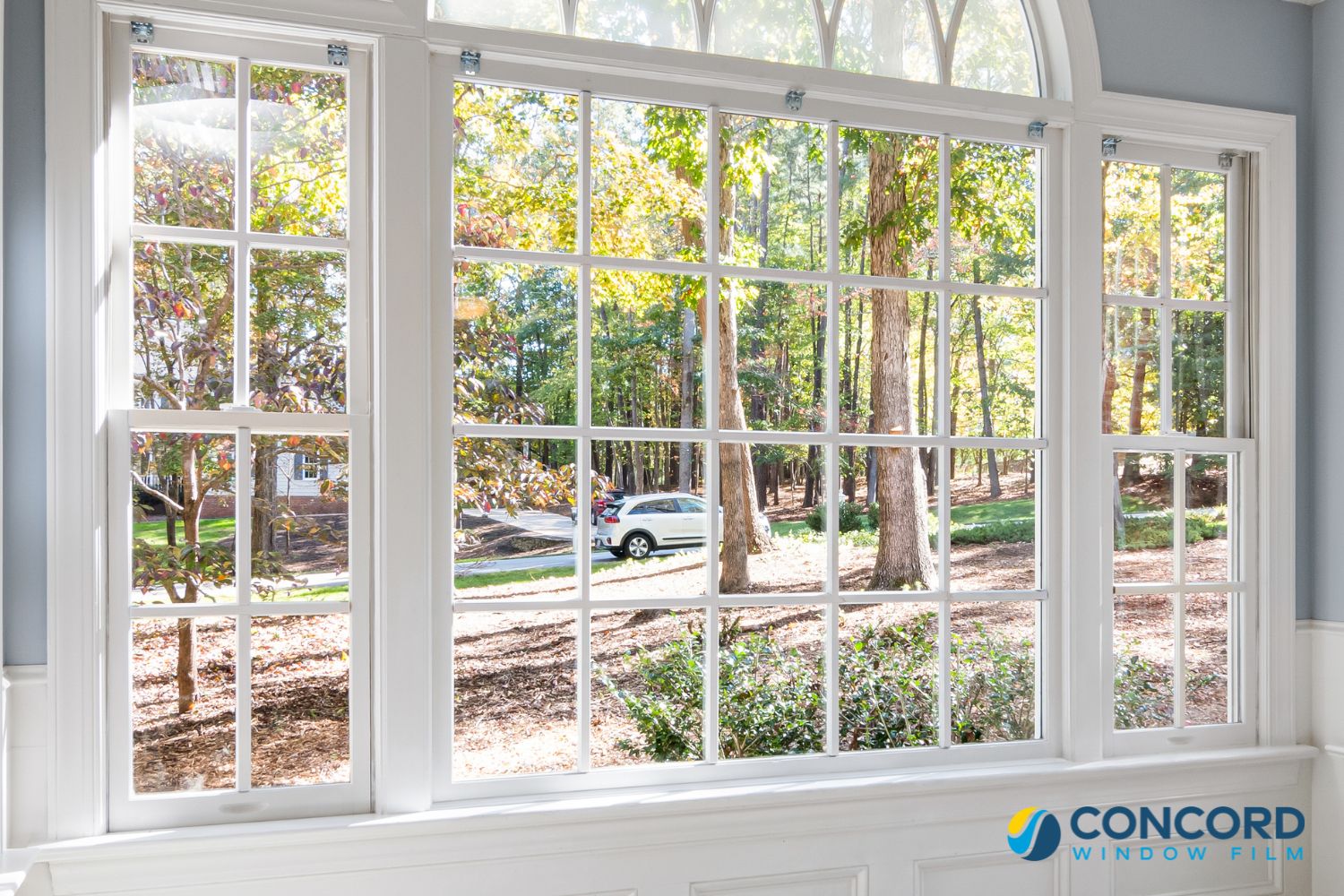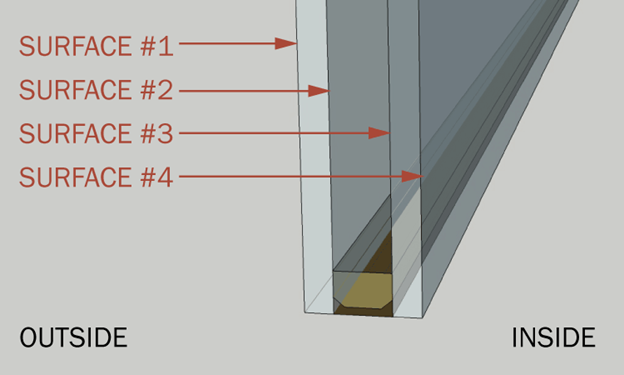
FREE SHIPPING ON PRECUT KIT ORDERS OF $100 OR MORE

We often get asked “can I put window film on low E windows”? In fact, I got asked this again yesterday, so, we answer this FAQ in today’s blog post.
Like many answers on this blog – don’t hate me! – the answer is: it depends. To answer the question in full, it helps to have an understanding of what low E means and what low E windows are.
What does low E even mean? The E in low E refers to emissivity. And according to the window manufacturer Jeld-Wen, “emissivity is a measure of how much thermal energy (such as sunlight or indoor heat) is absorbed by or reflected away from a material.”
They go on to explain that “in the case of ordinary clear glass, emissivity is pretty high: The glass absorbs heat from the sun and transfers that heat through to the other side of the glass. When you lower the emissivity of the glass, it reflects the heat rather than absorbing it, limiting the effect on the other side of the glass and increasing the glass’ insulating value.”
So low E glass is glass that doesn’t allow heat to pass through it as easily as clear glass.
Low E windows are simply windows with a low E coating on one of the panes of glass. Whether you can put window film on low E windows depends in part on what type of low E window you have. In general, there are two main types of low E windows that are made for different climates:
Passive Low E windows are made for and sold in the Northern climates of the United States where heat retention is the most important issue for homeowners. So in the colder Northern climate, that are “heating-dominant”, homeowners want windows that keep the heat in the home to reduce winter heating bills.
So, window companies developed a specific low E coating to prevent heat from escaping through the windows to the outside. This coating is typically made from “low-emissivity indium tin oxide” (Energy Education, University of Calgary) and is applied while the glass itself is being made.
The sun’s energy enters windows as short wave energy. While heat inside the home is long wave energy. So according to Vitro Architectural Glass, “Passive low-e coatings are ideal for very cold (or heating-dominated) climates because they allow some of the sun’s short-wave infrared energy to pass through and help heat a home during the winter, while still reflecting the interior long-wave heat energy back inside.”
In contrast, Solar Control Low E windows are made for and sold in the Southern climates of the United States that are consider “cooling-dominant” climates. The coating on these windows is made to reject the sun’s energy and prevent it from entering your window.
This type of low-E coating is typically a metal layer that is applied to the glass after it is made and cut into panes. Its main goal is to reduce the amount of solar heat entering the house through the window.
Again from Vitro Architectual Glass, the “transmittance of solar heat through glass is measured by the term ‘solar heat gain.’ Solar heat gain only occurs during daylight hours and is concentrated along a home’s east-, south- or western-facing elevations.”
Solar heat gain is measured in the window and window film industry by the solar heat gain coefficient (SHGC).
The SHGC is defined as the sum of incident solar energy that is transmitted inside through the glazing system. It includes solar energy directly transmitted and the part of absorbed solar energy that is released inwards.
It is calculated as the fraction of incident solar radiation that enters the building through window glass. SHGC is expressed as a number between 0 and 1. The lower a window’s solar heat gain coefficient, the less solar heat it transmits.
Read more about solar heat gain coefficient here.
Another major difference between the two types of low E windows is where the low E coating is applied. It’s important if you want to put window film on low E windows to know what type you have. One way to do this is to see where the low E coating is applied.
A double or dual-pane window is a window made with two panes of glass with an inert, insulating gas sandwiched between the panes. Read more about dual pane windows here.
In the window industry, each pane of glass has a surface, so in dual pane windows, the window has four glass surfaces:

Source: Archtoolbox
For Passive Low E windows, the coating is put on the interior pane of glass on surface#3. This is because the main goal of passive low E windows is to keep heat from escaping from the home.
Conversely, for Solar Control low E windows, the coating is put on Surface #2 on the outside pane of the window. This is so the glass can reject the solar energy before it gets into the home, keeping the home cooler.
You may be able to answer this question now that you have an understanding of low E windows – or at least understand why we say “it depends”.
If you live in the Northern, colder, heating-dominated climate, putting window film on surface #4 of your windows will negate some of the impact of your low E windows and is not recommended.
Your low E coating is on Surface #3 and you would install our solar control film on Surface #4. The coating and film are then facing each other and working against each other.
On the other hand, if you live in a cooling-dominated climate, your low-E is on surface #2 and putting our film on surface #4 will enhance the solar control properties of your windows. In this case, the coating and film will work together and reinforce each other.
So you want to put window film on low E windows, but aren’t sure what type you have?
If you live in the North of the United States, let’s say any state bordering Canada, you can be sure you are in the heat-dominate zone of the country and have passive low-E windows.
Similarly, if you live in Florida, Alabama, Mississippi, Louisiana or Texas and have low E windows, you can be sure you have solar control low E windows.
If you are anywhere else (or just want to double check), there is a way (and this will sound funny) that window film installers use to tell if the window itself is not marked.
Here’s a video that a window person did that demonstrates the method – you can start at 2:46 to see it: https://www.youtube.com/watch?v=EU8SamYUZ28.
So, if you have low-E windows and are interested in using window film, it’s important to know what type of low-E window you have before you install.
With 85 million single detached housing units in the United States and 66% of them built before 1989 (when low-E became mainstream), if you have an older home and haven’t replaced the windows, chances are you don’t have low-E windows.
And adding window film to regular windows, is an inexpensive way to get the benefits of low-E windows without the cost of replacing your windows.
Visit Concord Window Film to explore your options for solar control window film. And, contact us anytime with questions about your particular windows!